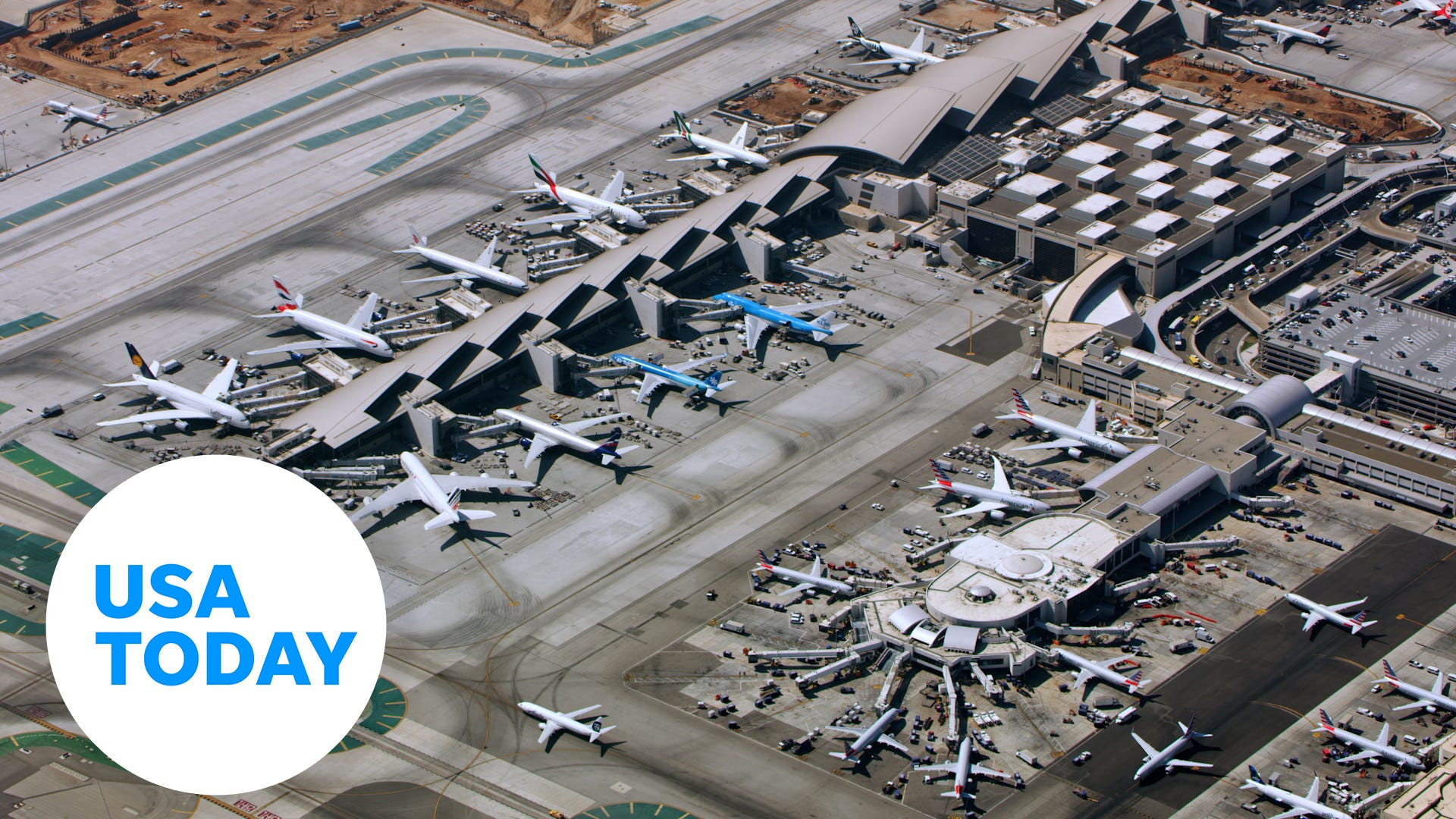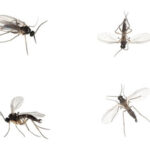Flying in 2025 is still considered very safe, despite some concerns about air accidents. At flyermedia.net, we provide an in-depth analysis of air travel safety, examining statistics and expert opinions to address your questions and reassure you about airline accident.
1. How Safe Is Flying in 2025 Compared to Previous Years?
Flying in 2025 maintains a high safety level, consistent with long-term trends. Despite a recent increase in reported air accidents, commercial air travel remains remarkably safe, thanks to continuous improvements and stringent safety protocols.
While initial statistics from the National Transportation Safety Board (NTSB) might cause alarm, it’s crucial to consider the context. Kristy Kiernan, associate director at the Boeing Center for Aviation and Aerospace Safety at Embry-Riddle Aeronautical University, notes that accidents involving U.S. air carriers have been rare events in the past 25 years. Occasional spikes in accident numbers are not necessarily indicative of a systemic problem. For example, a year with no accidents followed by one with a single incident represents an infinite increase, statistically, but may not reflect a significant change in overall safety.
2. What Factors Contribute to the Perception That Flying Is Riskier?
The perception of increased risk in air travel often stems from high-profile incidents and the way accident data is presented. Sensationalized media coverage can amplify concerns, even if the overall risk remains low.
Robert W. Mann Jr., president of R.W. Mann and Co., an independent airline consultancy, emphasizes that headline issues understandably cause concern. However, it’s essential to differentiate between various categories of flying. Data encompassing private, charter, and general aviation can skew perceptions of commercial flight safety, which has historically lower accident rates. To accurately assess the risks, it’s crucial to focus specifically on scheduled air carrier operations.
3. How Do Aviation Professionals Ensure Flying Remains Safe?
Aviation safety is maintained through continuous improvement, rigorous training, and a strong safety culture. This involves thorough investigations of incidents, implementation of preventative measures, and ongoing advancements in technology.
According to Kristy Kiernan, aviation has evolved towards a just culture, emphasizing accountability, transparency, trust, and continuous learning. This culture encourages people to report mistakes without fear of blame or shame, fostering a successful safety environment. Non-punitive approaches to error correction are critical in ensuring that systemic issues are identified and addressed effectively.
 Cockpit view of an airplane, illustrating the advanced technology and training involved in ensuring flight safety
Cockpit view of an airplane, illustrating the advanced technology and training involved in ensuring flight safety
4. What Are the Key Differences Between Commercial and Private Aviation Safety?
Commercial aviation adheres to stricter regulations, training, and maintenance standards compared to private aviation. These differences significantly contribute to the higher safety record of commercial flights.
Kristy Kiernan highlights the numerous differences between private and commercial aviation. Scheduled air carriers have stringent training and maintenance requirements, which are far more rigorous than those for private airplane owners. These differences in operational oversight contribute to the significantly lower accident rates in commercial aviation.
5. How Has Aviation Safety Improved Over the Years?
Aviation safety has improved dramatically over the years due to advancements in technology, enhanced training programs, and a proactive approach to identifying and mitigating risks. Continuous learning from past incidents has also played a crucial role.
Robert W. Mann Jr. emphasizes that driving accident rates down requires eliminating factors that contribute to incidents. This ongoing process involves the continuous involvement of every individual within the aviation industry. The safety culture, promoted and maintained by operators, is essential for sustained improvements in safety.
6. What Role Does Technology Play in Ensuring Aviation Safety?
Technology plays a vital role in enhancing aviation safety through advanced navigation systems, improved weather forecasting, and sophisticated aircraft maintenance monitoring. These technological advancements help reduce the risk of human error and equipment failure.
Kristy Kiernan notes that the aviation industry has processes that are rigorous in terms of identifying hazards, and technology helps mitigate those hazards. Advanced avionics, enhanced communication systems, and predictive maintenance tools all contribute to a safer flying environment.
7. What Can Passengers Do to Enhance Their Own Safety and Reduce Anxiety?
Passengers can enhance their safety by being aware of emergency procedures, paying attention to safety briefings, and familiarizing themselves with the location of emergency exits. Empowering themselves with knowledge can help reduce anxiety and improve their perception of risk.
According to Kristy Kiernan, knowledge is power for nervous passengers. Being aware of emergency exit locations and procedures outlined on the seatback safety card can help mitigate anxiety. She advises people not to worry about flying, but to empower themselves with knowledge to address their anxieties and align their risk perception with the objectively low risk of air travel.
8. How Do Aviation Investigations Contribute to Improved Safety?
Aviation investigations thoroughly analyze the causes of accidents and incidents to identify systemic issues and implement corrective actions. These investigations are crucial for preventing future accidents and continuously improving safety standards.
Investigations are essential for understanding what happened and identifying lessons learned, according to Robert W. Mann Jr. By thoroughly examining the contributing factors, the aviation industry can implement targeted improvements to prevent similar incidents from occurring in the future.
9. What is the Future of Aviation Safety?
The future of aviation safety involves ongoing advancements in technology, further refinement of safety protocols, and a continued commitment to a just culture. The goal is to continually drive down accident rates and ultimately achieve zero accidents.
Both Mann and Kiernan agree that flying remains extremely safe, but making aviation safer is an ongoing project. Kiernan emphasizes that continuous improvement is the reason she would get on a plane today, tomorrow, and regularly put her kids on a plane. Mann adds that while the objective is always zero accidents, achieving this goal requires constant effort to increase safety measures.
10. What Recent Incidents Have Impacted Perceptions of Air Travel Safety in 2025?
Several incidents in 2025 have raised concerns about air travel safety. A midair collision over the Potomac River in January involved a fatal plane crash of a U.S. airliner, marking the first such incident since 2009. Although isolated, this event has understandably heightened public anxiety.
Other accidents, such as the 2013 Asiana Airlines flight landing short of the runway in San Francisco and the 2018 Southwest Airlines engine malfunction, serve as reminders of the potential risks involved in air travel. While these incidents are tragic, they also highlight the aviation industry’s commitment to learning from mistakes and implementing measures to prevent future occurrences.
11. How Do Airlines Handle Maintenance and Preventative Measures in 2025?
Airlines in 2025 employ advanced maintenance programs that include regular inspections, predictive maintenance, and stringent adherence to manufacturer guidelines. These measures ensure that aircraft are in optimal condition and that potential issues are identified and addressed proactively.
Modern airlines leverage technology to monitor aircraft performance and schedule maintenance based on real-time data. This proactive approach allows them to detect potential problems before they escalate into serious issues, contributing to the overall safety of air travel.
12. What Training Do Pilots and Aircrew Receive in 2025?
Pilots and aircrew in 2025 undergo extensive training that includes classroom instruction, flight simulation, and on-the-job experience. This training covers a wide range of scenarios, including emergency procedures, adverse weather conditions, and aircraft malfunctions.
Flight simulators play a crucial role in pilot training, allowing them to practice handling various situations in a safe and controlled environment. Ongoing training and recurrent checks ensure that pilots maintain their skills and stay up-to-date with the latest safety procedures.
13. How Do Air Traffic Control Systems Ensure Safety in 2025?
Air traffic control systems in 2025 utilize advanced radar technology, communication systems, and automated tools to manage air traffic and prevent collisions. Air traffic controllers work closely with pilots to ensure safe separation between aircraft and provide guidance during all phases of flight.
Advanced air traffic management systems enhance situational awareness and allow controllers to make informed decisions in real-time. These systems also incorporate weather data and other relevant information to optimize flight paths and minimize delays.
14. What International Regulations Govern Air Travel Safety in 2025?
Air travel safety is governed by international regulations established by organizations such as the International Civil Aviation Organization (ICAO). These regulations cover a wide range of topics, including aircraft design, maintenance, pilot training, and air traffic control.
The ICAO works closely with national aviation authorities to ensure that these regulations are implemented consistently across the globe. Regular audits and inspections are conducted to verify compliance and identify areas for improvement.
15. How Does Weather Monitoring Contribute to Aviation Safety in 2025?
Weather monitoring plays a critical role in aviation safety by providing pilots and air traffic controllers with accurate and timely information about weather conditions. This information is used to make informed decisions about flight planning, routing, and takeoff/landing procedures.
Advanced weather forecasting models and radar systems allow meteorologists to predict weather patterns and identify potential hazards such as thunderstorms, turbulence, and icing conditions. This information is disseminated to pilots and air traffic controllers in real-time, enabling them to avoid hazardous weather and ensure the safety of flight operations.
16. What Emergency Procedures Are in Place on Commercial Flights in 2025?
Commercial flights in 2025 are equipped with a variety of emergency equipment, including oxygen masks, life vests, and emergency exits. Flight attendants are trained to handle a wide range of emergency situations, including medical emergencies, turbulence, and aircraft evacuations.
Prior to each flight, passengers are provided with a safety briefing that outlines emergency procedures and the location of safety equipment. In the event of an emergency, flight attendants will provide guidance and assistance to passengers to ensure their safety.
17. How Are Airports Designed and Operated to Ensure Safety in 2025?
Airports are designed and operated with safety as the top priority. Runways are carefully constructed and maintained to provide a smooth and safe surface for aircraft takeoff and landing. Air traffic control towers are strategically located to provide controllers with a clear view of the airfield.
Airports also employ a variety of safety measures, including perimeter fencing, security checkpoints, and emergency response teams. These measures are designed to prevent unauthorized access to the airfield and ensure a rapid response to any incidents that may occur.
18. What Security Measures Are in Place at Airports in 2025?
Airports in 2025 employ a multi-layered approach to security that includes passenger screening, baggage checks, and surveillance systems. These measures are designed to prevent prohibited items from being brought onto aircraft and to deter potential threats.
Passengers are required to undergo screening at security checkpoints, where they are subject to metal detectors, body scanners, and hand searches. Baggage is also screened using X-ray machines and other detection technologies. In addition, airports utilize surveillance cameras and other security systems to monitor activity and detect suspicious behavior.
19. How Are Aircraft Designed to Withstand Turbulence in 2025?
Aircraft are designed to withstand turbulence through a combination of structural engineering, aerodynamic design, and advanced control systems. Aircraft wings are designed to flex and absorb the energy of turbulence, while the fuselage is constructed from strong and lightweight materials.
Advanced control systems help pilots maintain control of the aircraft during turbulence by automatically adjusting the flight surfaces to counteract the effects of the turbulence. In addition, pilots are trained to recognize and avoid areas of severe turbulence.
20. What is the Role of Automation in Aviation Safety in 2025?
Automation plays an increasing role in aviation safety by reducing the workload on pilots and improving the accuracy and reliability of aircraft systems. Autopilot systems can automatically control the aircraft during all phases of flight, while automated warning systems can alert pilots to potential hazards.
While automation can enhance safety, it is important to ensure that pilots are properly trained to use automated systems and that they are able to take over manual control of the aircraft if necessary. In addition, it is important to design automated systems that are intuitive and easy to use, and that provide pilots with sufficient information to make informed decisions.
21. How Are Aviation Regulations Enforced in 2025?
Aviation regulations are enforced by national aviation authorities, such as the Federal Aviation Administration (FAA) in the United States. These authorities conduct regular inspections of airlines, airports, and other aviation facilities to ensure compliance with regulations.
Airlines and aviation personnel who violate regulations may be subject to fines, suspensions, or other penalties. In addition, aviation authorities may revoke the licenses or certificates of pilots, mechanics, and other aviation professionals who fail to meet the required standards.
22. How Are Passengers with Disabilities Accommodated on Flights in 2025?
Airlines are required to accommodate passengers with disabilities in accordance with regulations such as the Air Carrier Access Act (ACAA) in the United States. These regulations require airlines to provide assistance to passengers with disabilities, including boarding and deplaning assistance, wheelchair access, and accommodations for service animals.
Passengers with disabilities are encouraged to inform the airline of their needs in advance of travel, so that the airline can make the necessary arrangements to accommodate them. Airlines are also required to train their employees to assist passengers with disabilities in a respectful and professional manner.
23. How is Cybersecurity Addressed in Aviation Safety in 2025?
Cybersecurity is an increasingly important aspect of aviation safety. Airlines and aviation authorities are working to protect aircraft systems and infrastructure from cyber threats.
Measures include implementing firewalls and intrusion detection systems, encrypting data, and conducting regular security audits. Personnel are also trained to recognize and respond to cyber threats.
24. What New Technologies are Being Developed to Enhance Aviation Safety in the Future?
Several new technologies are being developed to further enhance aviation safety. These include:
- Advanced Sensors: Sensors that can detect structural damage, icing conditions, and other potential hazards.
- Autonomous Systems: Systems that can assist pilots with tasks such as navigation and collision avoidance.
- Artificial Intelligence: AI algorithms that can analyze data from various sources to identify potential safety risks.
- Improved Weather Forecasting: More accurate and timely weather forecasts that can help pilots avoid hazardous weather conditions.
25. What are the Key Takeaways About Aviation Safety in 2025?
Despite recent incidents that may have raised concerns, flying in 2025 remains remarkably safe. This is due to:
- Continuous improvements in technology and safety protocols.
- A strong safety culture within the aviation industry.
- Rigorous training and maintenance standards.
- Effective air traffic control systems.
- International regulations and enforcement.
Passengers can further enhance their safety by staying informed, following safety procedures, and being aware of their surroundings.
Discover More at flyermedia.net
At flyermedia.net, we are committed to providing you with the latest information and resources about aviation safety, training, and career opportunities.
- Explore Aviation Training Programs: Find top aviation schools and training programs in the U.S.
- Stay Informed with Aviation News: Get up-to-date news and analysis of the aviation industry.
- Discover Career Opportunities: Find exciting career paths in aviation and learn how to get started.
Ready to take your passion for aviation to new heights? Visit flyermedia.net today and start your journey!
If you have any questions or would like to learn more, please contact us:
Address: 600 S Clyde Morris Blvd, Daytona Beach, FL 32114, United States
Phone: +1 (386) 226-6000
Website: flyermedia.net
FAQ: Is Flying Safe In 2025?
1. Is flying safer than driving in 2025?
Yes, flying is statistically safer than driving due to stringent safety regulations and continuous improvements in aviation technology.
2. What are the chances of being in a plane crash in 2025?
The chances of being in a plane crash are extremely low, with commercial aviation maintaining a high safety record due to rigorous safety measures.
3. How often do planes crash in the U.S. in 2025?
Plane crashes in the U.S. involving commercial airlines are rare, thanks to comprehensive safety protocols and continuous enhancements in aviation technology.
4. What makes flying safe in 2025?
Flying is safe due to continuous improvements in technology, stringent safety regulations, rigorous training for pilots and aircrew, and a proactive approach to risk management.
5. What should I do if I’m afraid of flying in 2025?
Educate yourself about aviation safety, familiarize yourself with emergency procedures, and consider relaxation techniques to alleviate anxiety during flights.
6. Are smaller planes less safe than larger planes in 2025?
Smaller planes, particularly in general aviation, may have a higher accident rate compared to larger commercial planes due to less stringent regulations and training requirements.
7. How do airlines ensure the safety of their planes in 2025?
Airlines ensure safety through regular maintenance checks, adherence to manufacturer guidelines, advanced monitoring systems, and continuous training for their staff.
8. What role does the FAA play in aviation safety in 2025?
The FAA sets and enforces regulations for aviation safety, oversees aircraft maintenance, certifies pilots, and manages air traffic control to ensure the safety of air travel.
9. How does turbulence affect the safety of a flight in 2025?
Modern aircraft are designed to withstand turbulence, and pilots are trained to manage it. While turbulence can be uncomfortable, it rarely poses a significant safety risk.
10. What advancements are being made to make flying even safer in the future?
Advancements include improved automation, enhanced weather forecasting, advanced sensor technology for aircraft monitoring, and the development of more efficient and reliable aircraft designs.

